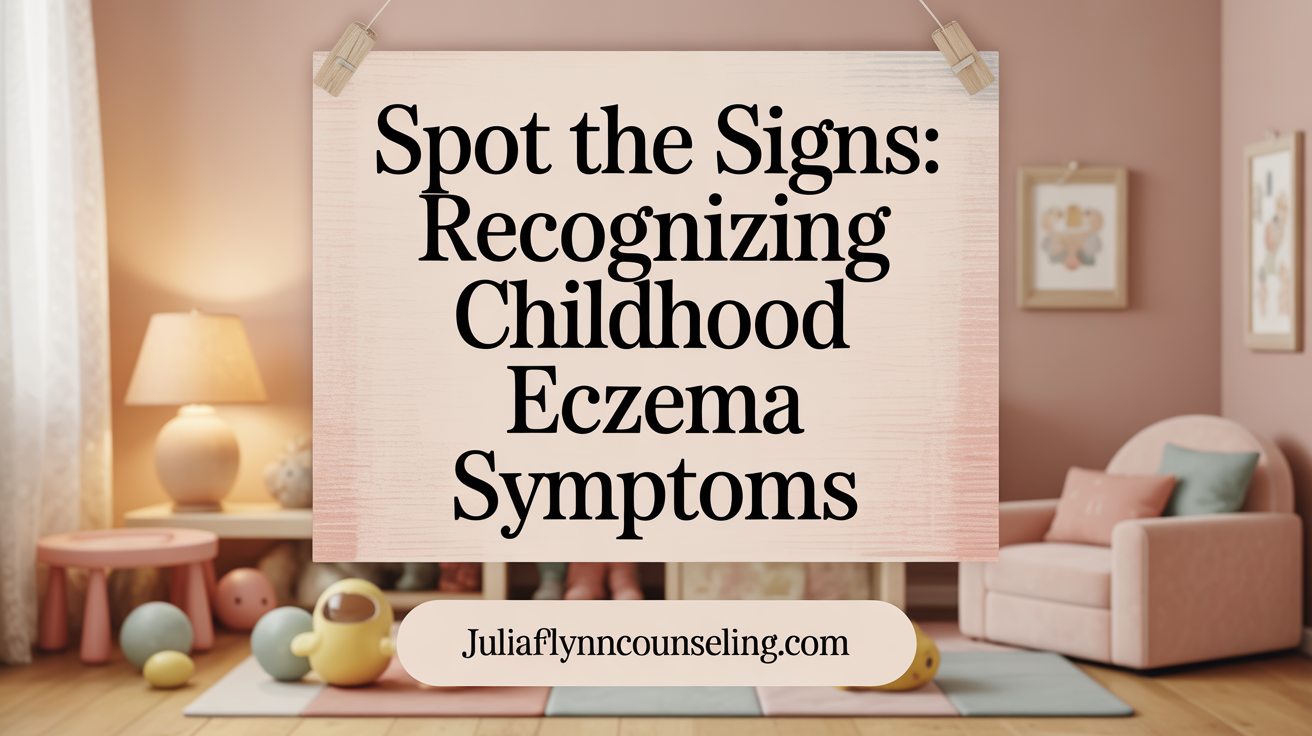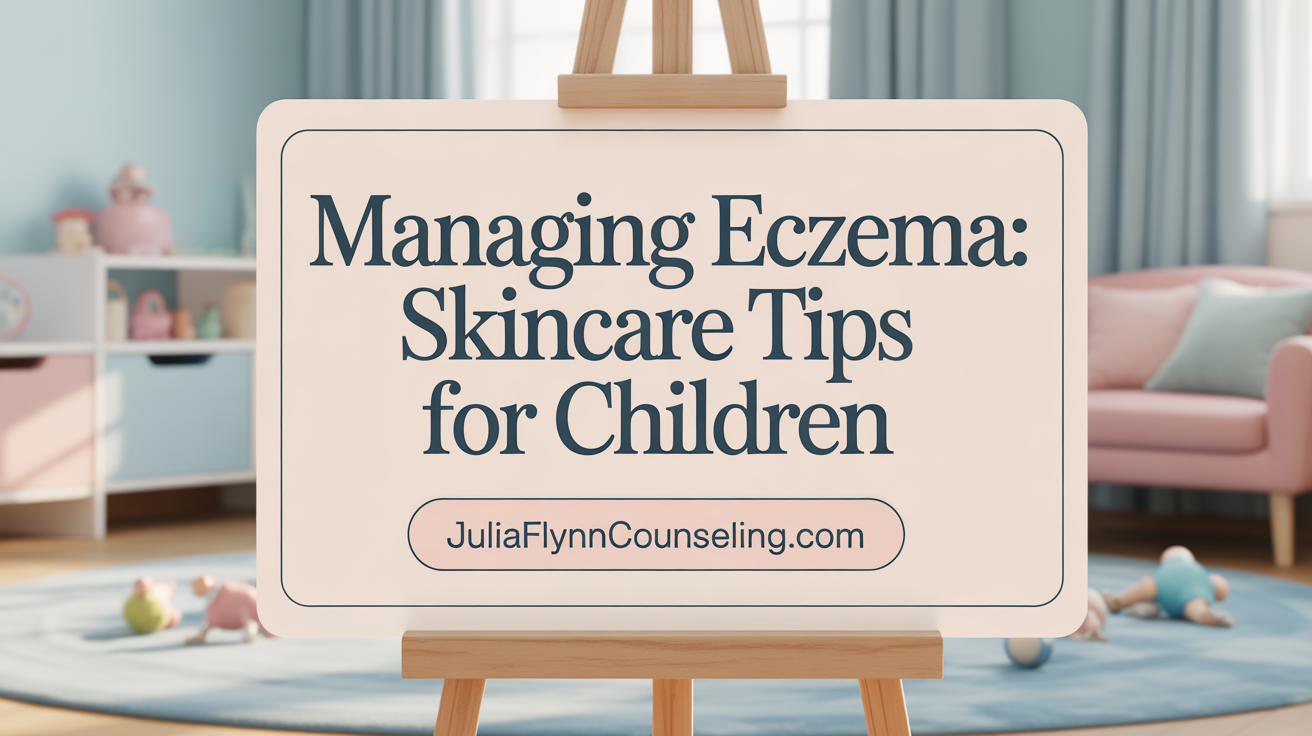Understanding Childhood Eczema and Its Impact
Childhood eczema is a prevalent and chronic skin condition that affects a significant number of children worldwide. Characterized by dry, itchy, inflamed skin, this condition can profoundly affect the quality of life for children and their families. This article delves into the nature of childhood eczema, its symptoms, causes, management strategies, treatment options, and the latest advances in care, offering parents and caregivers a comprehensive guide to understanding and effectively managing this challenging condition.
Defining Childhood Eczema and Its Types

What is childhood eczema and what are its main types?
Childhood eczema, medically known as atopic dermatitis, is a common, long-lasting (chronic) skin condition characterized by dry, itchy, inflamed skin that can sometimes become bumpy or scaly. It generally starts in infancy or early childhood, often affecting areas like the face, scalp, elbows, knees, and around the ears and lips.
The most prevalent form in children is atopic eczema, which is linked to a combination of genetic and environmental factors. Children with this condition often have a defective skin barrier, leading to moisture loss, increased sensitivity to irritants, and a higher risk of skin infections.
Apart from atopic dermatitis, there are several other types of eczema that may occur, sometimes at the same time. These include contact dermatitis (caused by direct contact with irritants or allergens), dyshidrotic eczema (small itchy blisters on the palms or soles), neurodermatitis (thickened patches due to chronic scratching), nummular eczema (coin-shaped spots), and seborrheic dermatitis (affecting oily areas like the scalp).
In children, eczema often links closely with other allergic conditions such as asthma or hay fever, forming part of an allergic predisposition.
Additional details about origins and associated conditions
Childhood eczema usually results from an overactive immune system reacting to environmental triggers. Genetic inheritance plays a significant role, with many children having family members who suffer from allergies or asthma.
Understanding these different types helps in accurately diagnosing and managing the condition, emphasizing skin hydration, trigger avoidance, and inflammation reduction to improve quality of life.
Recognizing the Symptoms and Signs of Childhood Eczema

What are the common symptoms and signs of childhood eczema?
Childhood eczema typically presents with a collection of skin changes that reflect inflammation and irritation. The most noticeable feature is dry, itchy skin that can be persistent and severe, often leading children to scratch relentlessly. These frequent scratching episodes can cause further skin damage, such as redness, swelling, and sometimes open sores or crusting.
Affected skin areas may develop thickened, leathery textures or become scaly owing to repeated scratching over time. Skin color changes are also common—either darkening in certain areas or, in darker skin tones, appearing gray, purple, or brownish. Small bumps or blisters may be visible, especially during flare-ups, and they can ooze or crust if scratched.
The distribution of eczema varies depending on age. In infants, the rash frequently appears on the face, scalp, and on outside surfaces of arms and legs. As children grow, the rash often involves the skin behind the knees, inside the elbows, and other flexural regions. Flare-ups tend to come and go, with periods of improvement interspersed with active symptoms.
While eczema causes discomfort due to intense itching, it does not cause pain unless the skin is severely broken or infected. These symptoms can lead to sleep disturbances, irritability, and discomfort, significantly impacting a child's daily life and emotional well-being.
Affected body areas
Eczema's location varies with age, with common affected areas including:
| Age Group | Typical Affected Areas | Additional Notes |
|---|---|---|
| Infants | Face, scalp, outside of arms, legs | Rash often starts on cheeks and forehead |
| Toddlers | Inside of elbows, behind knees, cheeks | Skin may be thickened in chronic cases |
| Older children | Flexural areas like behind knees, inside elbows | Less likely on face but may involve neck and wrists |
Children from different racial backgrounds might show variations, such as eczema on the front of knees or in skin creases. Recognizing these patterns helps in early diagnosis and management.
Characteristic signs like rashes, dryness, itching
Common signs include patches of dry, rough, and scaly skin paired with intense itchiness. The urge to scratch can worsen inflammation, leading to a cycle of symptoms. Rashes are usually red or darker on pigmented skin, sometimes with a crusted or leathery appearance in prolonged cases.
Children may develop small bumps or blisters during eczema outbreaks. Severe itching often worsens at night, disturbing sleep and increasing irritability.
Variation in skin color manifestations
In lighter skin, eczema may look like pink, red, or inflamed patches. In darker skin tones, the symptoms can be more subtle—manifesting as brown, purple, or gray patches, making diagnosis trickier without a trained eye.
Potential complications like infection and sleep disturbance
Secondary bacterial infection, often caused by Staphylococcus aureus, can occur if the skin barrier is compromised. Signs include increased redness, oozing, crusting, and warmth. Treating infections promptly is essential.
Additionally, eczema can significantly disturb sleep due to persistent itching, leading to fatigue, behavioral issues, and emotional stress. Proper management and early intervention can help mitigate these impacts and improve quality of life.
Causes and Risk Factors Associated with Childhood Eczema

What causes eczema in children and what are the main risk factors?
Eczema in children primarily results from a mix of genetic and environmental factors. A common genetic component involves mutations in the filaggrin gene, which weaken the skin's protective barrier. This disruption leads to increased water loss, making the skin dry and more sensitive to irritants and allergens.
Environmental triggers play a significant role in worsening eczema symptoms. These include exposure to harsh soaps, rough fabrics like wool, dust mites, pet fur, pollen, and pollutants. Dry air and sudden changes in weather can also exacerbate the condition.
Children with a family history of eczema, asthma, or allergic rhinitis are at higher risk of developing eczema themselves. This familial link suggests a hereditary component where immune system sensitivities are passed down.
Common irritants and allergens involved in eczema flare-ups include foods such as dairy, eggs, and nuts, as well as environmental factors like smoke, scented products, and certain fabrics. These factors increase the likelihood of skin inflammation, itching, and bumps.
The immune system is actively involved in eczema, often reacting hypersensitively to environmental triggers. This immune response leads to inflammation, redness, and swelling of the skin.
Furthermore, children with eczema often experience other allergic conditions, including asthma and hay fever, indicating an overall increased susceptibility to allergies.
In summary, inherited skin barrier defects combined with exposure to environmental irritants and allergens, along with an overactive immune response, make up the main causes and risk factors of childhood eczema. Preventive strategies and careful management of environmental factors can help reduce the severity and frequency of flare-ups.
Effective Management and Skincare for Childhood Eczema

How can parents and caregivers manage and care for children with eczema?
Managing childhood eczema involves a careful and consistent skincare routine that focuses on maintaining skin hydration and reducing irritation. Parents should frequently apply emollients—thick, ointment-type moisturizers like petrolatum—immediately after baths and throughout the day, especially after scratching or when skin feels dry. Gentle, fragrance-free cleansers should replace harsh soaps, and bathing should be done in lukewarm water for about five to ten minutes only. During flare-ups, prescribed topical steroid creams can help decrease inflammation, but these should always be used under medical guidance.
In addition, keeping nails short helps prevent skin damage from scratching, which can worsen eczema or lead to infection. It’s also important to identify and avoid known triggers such as certain fabrics, soaps, pet dander, and certain foods.
Consulting a healthcare provider, such as a pediatrician or dermatologist, can help tailor a management plan suited to the child’s specific condition. Regular follow-ups ensure that treatment remains effective and adjustments are made as needed.
Treatment Options for Childhood Eczema: From OTC to Advanced Therapies

What are the recommended treatment options for childhood eczema?
Managing eczema in children involves multiple strategies aimed at reducing symptoms and preventing flare-ups. A fundamental part of treatment is maintaining skin hydration through regular use of emollients or moisturizers like petroleum jelly and mineral oil. This helps restore the skin's protective barrier and prevents water loss.
A common technique called the 'Soak and Seal' method enhances treatment efficacy. It involves bathing in lukewarm water with gentle cleansers, patting the skin dry, then promptly applying medications and moisturizers within three minutes of bathing. This method helps lock in moisture and soothes irritated skin.
During flare-ups, topical corticosteroids of low potency are often prescribed to reduce inflammation and itching. These should be used under medical supervision, with appropriate duration and frequency to avoid side effects. For more severe cases, doctors might recommend systemic treatments such as immunosuppressants or biologic drugs like Dupixent, approved for children aged 6 and older.
Additional therapies like wet wrap therapy and phototherapy (UVB light therapy) can be beneficial for moderate to severe eczema, helping to hydrate the skin and reduce inflammation effectively. Managing external triggers—such as irritants, allergens, and environmental dryness—is also vital. Avoiding scented soaps, harsh detergents, and maintaining a consistent skincare routine helps control eczema symptoms.
Since eczema is a lifelong condition with no known cure, treatment plans should be customized for each child’s needs. Regular follow-ups with healthcare providers are essential to monitor progress and adjust therapies as needed, ensuring optimal skin health and quality of life.
What over-the-counter treatments are available for children with eczema?
Children with eczema have access to various over-the-counter options that can help manage mild symptoms. Over-the-counter products primarily include gentle cleansers, moisturizing ointments, and low-potency steroid creams.
Gentle, fragrance-free cleansers help cleanse the skin without causing irritation, while thick emollients like petroleum jelly and mineral oil are effective at maintaining skin hydration. These ointments create a barrier that keeps moisture in and protects against irritants.
Low-dose hydrocortisone creams, usually containing 1% hydrocortisone, are available OTC and can reduce inflammation during flare-ups. They should be used carefully and only as directed, typically for up to a week. Antihistamines such as diphenhydramine may also be used to relieve itching and improve sleep, but they can cause drowsiness.
It's crucial for parents and caregivers to follow usage instructions closely and seek guidance from healthcare professionals before starting any new treatments to ensure safety and proper application. Consistent usage of these OTC options, combined with good skincare habits, can significantly improve eczema symptoms in children.
Dietary Considerations to Minimize Eczema Flare-Ups in Toddlers
What foods should be avoided to prevent eczema flare-ups in toddlers?
Managing diet is an important part of controlling eczema symptoms in young children. Certain foods are known to trigger or worsen flare-ups, especially in children with food sensitivities or allergies.
Common foods to watch out for include highly allergenic items such as cow’s milk, eggs, peanuts, soy, wheat, and shellfish. These are frequently associated with allergic reactions that can exacerbate eczema symptoms. If a food allergy is suspected, allergy testing or elimination diets can help identify specific triggers.
Foods high in histamines, such as tomatoes, citrus fruits, chocolate, processed meats, and fermented foods, may also provoke flare-ups in some children. It is wise to limit or avoid these if they are found to cause symptoms.
Artificial additives, food coloring, preservatives, and chemical irritants can also irritate sensitive skin. Minimizing consumption of processed snacks or foods with artificial ingredients can be beneficial.
Instead, focus on a nutritious, well-balanced diet rich in vegetables, fruits, omega-3 fatty acids (found in fish like salmon and mackerel), and probiotics. These foods can help support skin health, reduce inflammation, and strengthen the immune system.
It is important to remember that dietary restrictions should always be guided by healthcare professionals, such as allergists or dietitians, to prevent nutritional deficiencies. Proper diagnosis and guidance will ensure that toddlers receive the necessary nutrients while avoiding foods that might trigger eczema flare-ups.
Emerging Research and Innovative Treatments for Childhood Eczema
What are the latest research findings and new treatment approaches for childhood eczema?
Recent advances in the management of childhood eczema have introduced promising new therapies and approaches. In 2024, the U.S. Food and Drug Administration (FDA) approved four new treatments aimed at providing better symptom control and reducing inflammation with fewer side effects.
Among these are topical PDE4 inhibitors, such as Zoryve and Vtama, which work by suppressing inflammation directly in the skin. These offer alternative options to traditional corticosteroids, especially for long-term use.
Biologically targeted medications, known as biologics, have expanded treatment possibilities. Drugs like lebrikizumab, nemolizumab, and dupilumab focus on specific immune pathways involved in eczema, particularly IL-13, IL-31, and IL-4/IL-13. These are now approved for children aged 6 months and up, giving younger patients access to advanced therapies.
In addition, topical and systemic JAK inhibitors are gaining ground. Ruxolitinib, a topical JAK inhibitor, has shown effectiveness in treating inflammation and itchiness. Systemic options such as upadacitinib and abrocitinib are oral medications used for moderate to severe cases, offering rapid relief and fewer side effects.
Scientific research is also exploring microbiome-based treatments. Topical probiotics like Roseomonas mucosa and Staphylococcus hominis, derived from healthy skin bacteria, are under clinical trials. These aim to restore the natural skin flora, rebuild skin barrier function, and reduce abnormal immune responses.
Ongoing studies continue to refine these therapies, with a focus on personalized medicine—tailoring treatments based on genetic, immune, and environmental factors. Advances in understanding immune mechanisms, including how immune cells react in eczema, support the development of more precise, targeted treatments.
Overall, these innovations represent a significant step forward in eczema care, particularly for children who may not respond well to traditional therapies. By expanding the treatment options and improving safety profiles, researchers hope to better manage symptoms, prevent flares, and improve quality of life for children living with eczema.
Navigating Childhood Eczema with Knowledge and Care
Although childhood eczema is a chronic and often challenging condition, understanding its nature, symptoms, and triggers empowers parents and caregivers to effectively manage and alleviate its impact. Through consistent skincare routines, mindful avoidance of triggers, appropriate medical treatments, and awareness of emerging therapies, children with eczema can experience improved skin health and quality of life. Ongoing research continues to bring promising treatment options, offering hope for more personalized and effective care in the future. Support, education, and proactive management remain essential in helping children live comfortably with eczema.
References
- Eczema Treatment for Children
- Treating your childs eczema - Mayo Clinic Health System
- Eczema: What It Is, Symptoms, Causes, Types & Treatment
- Understanding and Managing Childhood Eczema
- Eczema Treatment Research | NIAID
- Managing Eczema in Winter and Year Round: A Parents Guide
- Children and eczema
- Easing the Itch: Understanding Eczema in Children and Effective ...
- Management of atopic eczema in children aged up to 12 years
